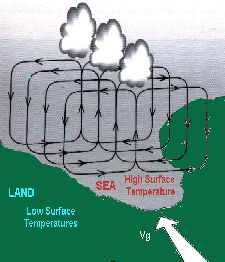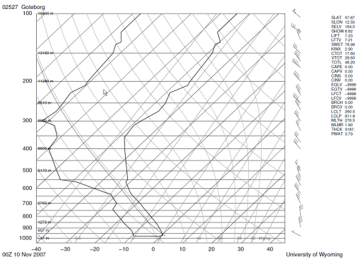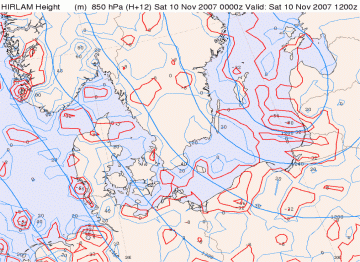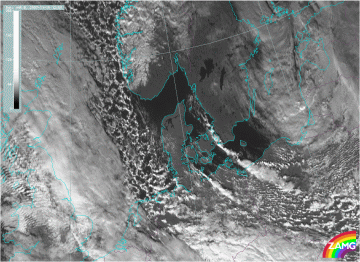Convergence Lines Over Seas And Lakes - Meteorological Physical Background
by KNMI
The cold air stream becomes unstable due to turbulent transport of sensible and latent heat from the warm sea surface. Convergence Lines form downwind of major bends in the coastline. A bay with offshore winds is thus an ideal generation area. A good example is the development of lines over the Gulf of Bothnia as shown in chapter 1 "Cloud structure in satellite images", date March 23 2008 12.00 UTC.In general the lines are advected with the base flow and can bring large amounts of precipitation to adjacent areas.

The warm sea water heats the continental air from below. Focussing on the data of 10 November 2007 (see the chapter on cloud structure) and using the OSI-SAF composite image (see Key parameters) the temperature of the seawater in the Kattegat can be derived : around +10°C.
The initial temperature profile is shown by the skewT logP diagram of Göteborg , the image below.
A strong inversion at the surface ( T and Td equal to - 10°C ) exists over land as a result of night time cooling. This initial continental air is heated when advected over the warm sea with temperature around +10°C. With a convection temperature of +5 or higher convective clouds may develop over sea if enough moisture is available. Tops are expected to be near 550 hPa or 15.000ft at the height of an upper level inversion with much drier air above. Continuation of this topographical effect will result in organised convective cloud bands.

|
10 November 2007/12.00 UTC - HiRLAM; red: vertical motion (Omega) at 850 hPa
|
10 November 2007/12.00 UTC - Meteosat 8 HRVIS image
|

|

|


